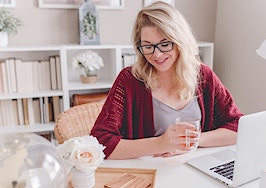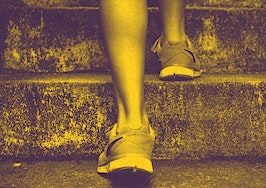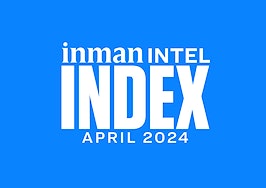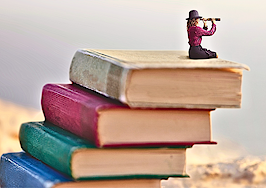We all sit here. Many of us with shelter-in-place orders from local or state governments, facing serious economic uncertainty, solitude, in some cases, and threat to health and are left to deal with our homes and immediate family members, or ourselves, in new ways.
This creates more than one challenge. Being alone — or facing great uncertainty — can be among the hardest things to do. When habits and routines are stripped away, the persistent question of what does this all mean can jump in our faces.
Which leads to other difficult but important questions. What can we depend on? If we investigate, and times like these help make this clear, there is nothing solid to rest on.
What centers us that is independent of circumstances? Answering that question, or attempting to, can add some solidity in times when the ground is shaking underneath us, like now.
The temple
When I was 26, just after graduating with a master’s in English from a small college in Austin, Texas, I lived for a year at a Rinzai Zen Buddhist temple in Northern California run in the Japanese Zen monastic tradition. Rinzai is one of the two main sects of Japanese Zen Buddhism; the other, more popular one in America, is Soto. How I got there is a longer story, the TLDR version goes: It was an organic development.
At the temple, I was alone in many ways, living there full time as the only resident student with just the two teachers, the ordained Zen priest and the Zen teacher, who ran the program with a dedicated, unwavering focus on the practice.
Sutras started at 4:30 a.m., meditation started at 5:30 a.m., breakfast at 7 a.m., work at 9 a.m., lunch at 11:30 a.m., study at 1 p.m., dinner at 3:50 p.m., bath at 4:10 p.m., and meditation from 6-9 p.m. Every day. A week each month, the schedule intensified to 10 hours of meditation each day.
As the head priest told me at some point while at the temple, which included two traditionally built temple structures and three others on 40 acres of remote mountainous terrain, the Rinzai monastery is a cross between the military and prison.
The lifestyle is designed to strip everything away that we depend on, that distracts us, provides comfort. We are forced to turn inward for any joy, stability. That’s a tall task. This is not a Zen story, as I’ve found that the sincere act of contemplation transcends dogma and religion, the fundamental truths ring true from many approaches.
Sitting
I’ve meditated (or prayed if you prefer) every day since I was 21 (I’m 41 now), mainly because of a natural resonance with the practice and an undeniable recognition of its value.
As my teachers emphasized, and as I suggest here, don’t follow any words; try it and the benefit — or lack thereof — will be self-evident. Sitting — as we call meditation — made my life better, but not because I thought my way out of problems or thought positively; it went deeper and more fundamental than that.
Actually, I’m not sure exactly how it works, but it does. That’s its power. The ultimate reasoning is unknown and unknowable, but time and again, my life improved when I sat. I don’t question any longer. I just get up and sit and see where it takes me.
The deepest aspects of life cannot be solved by thinking, something I confronted in the many Zen koans (phrases used in Zen training to provoke insight) I spent time with. “Show me your face before your mother and father were born,” “Who or what is breathing,” “A demon holds you over a pit of fire, what do you do?”
These questions don’t have answers in thought, only experience. And with diligence and courage in that experience, a solid way through emerges.
It’s not about sitting per se, but rather making ourselves vulnerable and honestly facing what’s in front of us. That’s the practice.
How
If you’re curious to try, here’s a suggested process. Find a clean, quiet corner or space, and set up a chair (sitting upright is usually best as this supports an alert, relaxed posture). Light a candle or incense, and set a timer (start with just 5 minutes). It’s usually best to do this in the morning when we first get up — the mind’s quieter then, and the day’s demands have yet to take over.
Sit erect, shoulders over hips, relaxed, crown of the head reaching toward the ceiling. Start the timer, rest your hands in your lap and lightly close your eyes. Start breathing from your center of gravity, the place about two inches below your navel. Breathe in through the nose and out through the mouth in a measured, steady breath.
And then watch your thoughts as they come. Try not to follow them, but watch them ebb and flow. Make an effort not to move or open the eyes until the timer ends. When it does, get up, and continue with the day.
You might notice a sense of calm, a compulsion to address lingering projects or issues, find compassion for yourself and others spontaneously arise and make decisions that improve your life. You might not.
Facing up
To be clear, sitting has not made things easier, but it has made life more solid and better. In some ways, its greatest utility lies in forcing us to confront the most uncomfortable things in our lives head on.
That is also its gift. We face the blocks, the fear directly so it doesn’t control us.
We also face an opportunity now, when life shifts, the ground shakes and we find ourselves facing uncomfortable truths. Yes, health and financial circumstances are critical and take the forefront, but this difficult time also forces us to acknowledge something deeper, something we must all address at one point or another.
Sitting or contemplation is not a panacea, but it can allow us to cultivate something that does not depend on the challenging circumstances many of us now find ourselves in. That stability can support a calm and confidence that remains, in good times and bad.
For those this resonates with and who might need this note at this time, I hope this helps.
Paul Hagey is executive editor of the residential real estate consulting and research firm T3 Sixty and runs Boulder, Colorado, digital publication BLDRfly.













